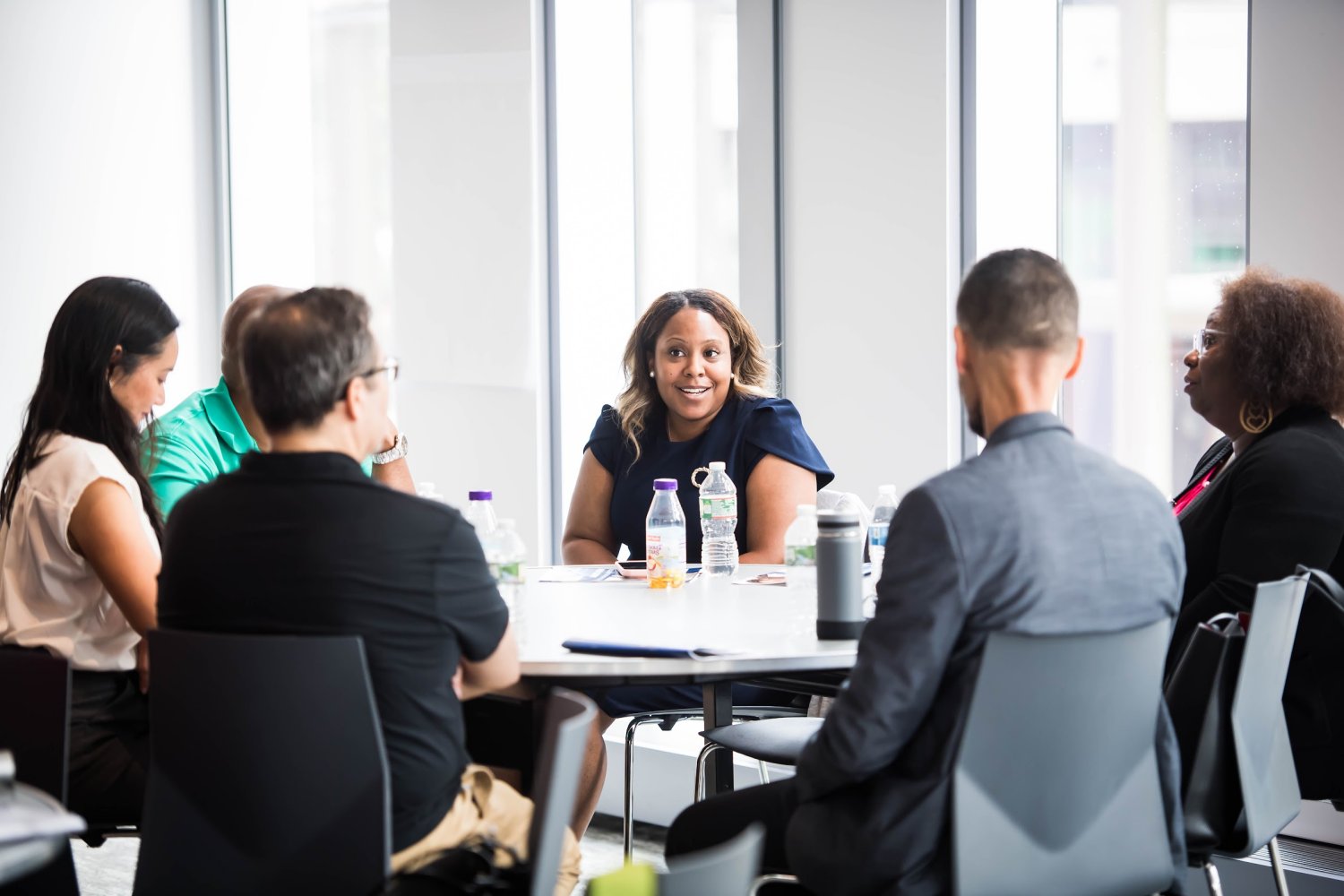
In June 2023, after the U.S. Supreme Court ruled that colleges and universities could no longer use race as a factor in their admission decisions, many higher education institutions across the United States faced the same challenge: how to maintain diversity in their student bodies. So Noelle Wakefield, director of MIT’s Summer Research Program (MSRP) and assistant dean for diversity initiatives in MIT’s Office of Graduate Education (OGE), started planning.
On July 31, a little more than a year after the decision was released, the OGE hosted the inaugural Inclusive Pathways to the PhD Summit, which brought representatives from nearly 20 minority-serving institutions (MSIs), including several historically Black colleges and universities (HBCUs), to Cambridge, Massachusetts, to meet with MIT administrators, faculty, and doctoral students. The admission question — how to continue attracting a diverse cohort of graduate students with the new legal restrictions? — was only the first of many that framed a broader and more complex picture.
“What are fresh ways for us to find talent in places that aren’t typically represented at MIT?” Wakefield asks. “How can we form partnerships with institutions that aren’t already part of our ecosystem? What is the formula for partnerships where both institutions benefit and feel good about the work that is happening?”
These aren’t new outreach questions for MIT, Wakefield says, but the changing admissions landscape sparked a need for the Institute to “be more thoughtful.”
And a need to clear up misperceptions, adds Denzil Streete, senior associate dean and director of the OGE. “MIT faculty may have outdated perspectives about HBCUs and MSIs,” he says. “And our visitors may be relying on historical knowledge of MIT that is largely negative” when it comes to attracting graduate applications from smaller, lesser-known colleges and universities. The summit was designed to be a first step in demystifying these assumptions and in establishing “a common platform and a shared understanding for moving forward,” Streete says.
For decades, the OGE has focused its HBCU and MSI outreach efforts on student recruitment, but the summit signals a broadening of that approach to include faculty and staff mentors — the people Wakefield describes as “levers for decision-making” among prospective graduate students. Streete says, “if we at MIT say we attract the best and brightest in the world and we don’t include these institutions, then our supposition comes into question.”
The summit agenda included information sessions about navigating the MIT graduate admission process and finding research opportunities for undergraduates, as well as conversations with current MIT doctoral students who’d graduated from the MSIs represented at the summit. There was a campus tour, a poster session by students in the MIT Summer Research Program, and a panel discussion on forming reciprocal relationships with HBCUs and MSIs, featuring visitors from Spelman College, Prairie View A & M University, and the University of Puerto Rico, among others.
That discussion resonated with visitor Gwendolyn Scott-Jones, dean of the Wesley College of Health and Behavioral Sciences at Delaware State University. “It felt like an authentic discussion about the disparities and lack of equal resources that HBCUs historically contend with compared to predominantly white institutions,” she observes. “HBCUs have been known to do more with less and have produced very talented professionals, and I believe MIT is trying to provide HBCUs with access and opportunity.”
One of the summit’s goals was to begin ensuring that this access and opportunity would be “bidirectional” — going both ways between an institution like MIT and an HCBU like Lincoln University in Pennsylvania, where Christina Chisholm, one of the panelists, did her undergraduate work. Collaborations “aren’t spaces in which you’re just throwing money at something to fix it, or to bridge a gap,” says Chisholm, a biophysicist who’s now director of the McNair Scholars Program and Thrive Student Support Services at Rutgers University.
Instead, she advised, focus on cooperation, coordination, and positive mentorship. Tiffany Oliver, a biology professor at Spelman, recalled a potential student-research project she was exploring with a partner at a larger institution who would host her students in his lab. “His attitude was, ‘We have the money so we’re going to tell you what you need to do.’” she recalls. “That’s a reflection of how you’re going to treat my students, and I would rather send my students to some other place if the people show that they care. I want my students to leave school still loving science, not tarnished by science.”
Another piece of advice came from Kareem McLemore, assistant vice president of strategic enrollment management at Delaware State. “When you’re partnering with us, the first thing we’re going to ask is, ‘Are you doing this to check a box?’” he says. “If it’s a checkbox, we don’t want it. We want to know what the objectives are, the key goals, the KPIs [key performance indicators]. You may have the money, but think about the resources we have as HBCUs that can help you raise your brand. We have to ride the wave together.”
The summit served as a starting point: a way to build trust among institutions with different histories and resources, and to stimulate ideas for future partnerships, whether that means a joint research project, a shared curriculum, or a faculty exchange.
“We all understand that talent is everywhere but opportunity is not distributed in the same manner,” says Bryan Thomas Jr., assistant dean for diversity, equity, and inclusion at the MIT Sloan School of Management and a co-organizer of the event. Broadening MIT’s networks through the Inclusive Pathways Summit means “expanding our ecosystem of opportunity, collaboration, and adding new ways of solving problems,” he says. “And that ultimately benefits all of us.”
